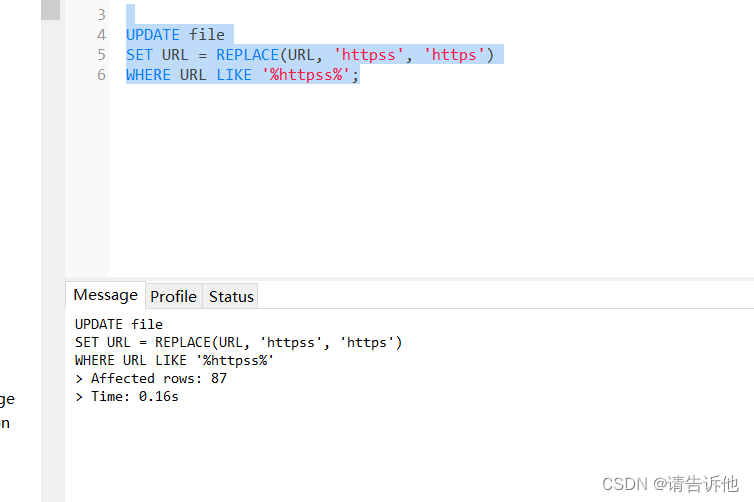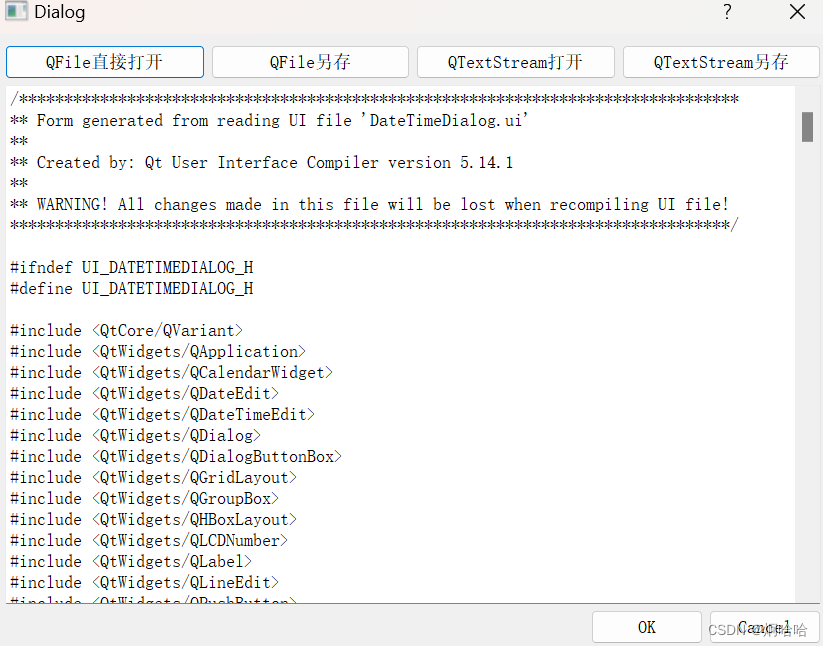简介
张量是一种专门的数据结构,与数组和矩阵非常相似。在PyTorch中,我们使用张量来编码模型的输入和输出,以及模型的参数。
张量与NumPy的ndarrays相似,只是张量可以在GPU或其他硬件加速器上运行。事实上,张量和NumPy数组通常可以共享相同的底层内存,无需复制数据(请参阅带有NumPy的桥接)。张量也针对自动分化进行了优化(我们稍后将在Autograd部分看到更多信息)。如果您熟悉ndarrays,您就可以在家使用Tensor API。如果没有,请跟随!
初始化张量
import torch
import numpy as np
#直接来自数据
#张量可以直接从数据中创建。数据类型被自动推断。
data = [[1, 2],[3, 4]]
x_data = torch.tensor(data)
#从NumPy数组
#张量可以从NumPy数组创建(反之亦然-请参阅带有NumPy的桥接)。
np_array = np.array(data)
x_np = torch.from_numpy(np_array)
#来自另一个张量:
#新张量保留参数张量的属性(形状、数据类型),除非明确覆盖。
x_ones = torch.ones_like(x_data) # retains the properties of x_data
print(f"Ones Tensor: \n {x_ones} \n")
x_rand = torch.rand_like(x_data, dtype=torch.float) # overrides the datatype of x_data
print(f"Random Tensor: \n {x_rand} \n")
#随机或恒定值:
#shape是张量维度的元组。在下面的函数中,它决定了输出张量的维度。
shape = (2,3,)
rand_tensor = torch.rand(shape)
ones_tensor = torch.ones(shape)
zeros_tensor = torch.zeros(shape)
print(f"Random Tensor: \n {rand_tensor} \n")
print(f"Ones Tensor: \n {ones_tensor} \n")
print(f"Zeros Tensor: \n {zeros_tensor}")
张量的属性
张量属性描述它们的形状、数据类型以及存储它们的设备。
tensor = torch.rand(3,4)
print(f"Shape of tensor: {tensor.shape}")
print(f"Datatype of tensor: {tensor.dtype}")
print(f"Device tensor is stored on: {tensor.device}")
Shape of tensor: torch.Size([3, 4])
Datatype of tensor: torch.float32
Device tensor is stored on: cpu
张量的操作
这里全面描述了100多个张量运算,包括算术、线性代数、矩阵操作(转位、索引、切片)、采样等。
这些操作中的每一个都可以在GPU上运行(通常速度比CPU快)。如果您使用的是Colab,请转到运行时>更改运行时类型>GPU来分配GPU。
默认情况下,张量是在CPU上创建的。我们需要使用.to方法(在检查GPU可用性后)明确地将张量移动到GPU。请记住,在设备之间复制大张量在时间和内存方面可能很昂贵!
# We move our tensor to the GPU if available
if torch.cuda.is_available():
tensor = tensor.to("cuda")
标准numpy样索引和切片
tensor = torch.ones(4, 4)
print(f"First row: {tensor[0]}")
print(f"First column: {tensor[:, 0]}")
print(f"Last column: {tensor[..., -1]}")
tensor[:,1] = 0
print(tensor)
First row: tensor([1., 1., 1., 1.])
First column: tensor([1., 1., 1., 1.])
Last column: tensor([1., 1., 1., 1.])
tensor([[1., 0., 1., 1.],
[1., 0., 1., 1.],
[1., 0., 1., 1.],
[1., 0., 1., 1.]])
算术运算
# This computes the matrix multiplication between two tensors. y1, y2, y3 will have the same value
# ``tensor.T`` returns the transpose of a tensor
y1 = tensor @ tensor.T
y2 = tensor.matmul(tensor.T)
y3 = torch.rand_like(y1)
torch.matmul(tensor, tensor.T, out=y3)
# This computes the element-wise product. z1, z2, z3 will have the same value
z1 = tensor * tensor
z2 = tensor.mul(tensor)
z3 = torch.rand_like(tensor)
torch.mul(tensor, tensor, out=z3)
tensor([[1., 0., 1., 1.],
[1., 0., 1., 1.],
[1., 0., 1., 1.],
[1., 0., 1., 1.]])
单元素张量 如果您有一个单元素张量,例如通过将张量的所有值聚合到一个值中,您可以使用item()将其转换为Python数值:
agg = tensor.sum()
agg_item = agg.item()
print(agg_item, type(agg_item))
12.0 <class 'float'>
将结果存储到操作数中的就地操作称为就地操作。它们用一个_后缀表示。例如:x.copy_(y)x.t_()将更改x。
print(f"{tensor} \n")
tensor.add_(5)
print(tensor)
tensor([[1., 0., 1., 1.],
[1., 0., 1., 1.],
[1., 0., 1., 1.],
[1., 0., 1., 1.]])
tensor([[6., 5., 6., 6.],
[6., 5., 6., 6.],
[6., 5., 6., 6.],
[6., 5., 6., 6.]])
备注:就地操作可以节省一些内存,但在计算衍生品时可能会有问题,因为历史会立即丢失。因此,不鼓励使用它们。
与NumPy的桥梁
cpu和NumPy阵列上的张量可以共享其底层内存位置,更改一个将改变另一个
张量到NumPy数组
t = torch.ones(5)
print(f"t: {t}")
n = t.numpy()
print(f"n: {n}")
t: tensor([1., 1., 1., 1., 1.])
n: [1. 1. 1. 1. 1.]
张量的变化反映在NumPy数组中。
t.add_(1)
print(f"t: {t}")
print(f"n: {n}")
t: tensor([2., 2., 2., 2., 2.])
n: [2. 2. 2. 2. 2.]
NumPy阵列到张量
n = np.ones(5)
t = torch.from_numpy(n)
NumPy数组的变化反映在张量中。
np.add(n, 1, out=n)
print(f"t: {t}")
print(f"n: {n}")
t: tensor([2., 2., 2., 2., 2.], dtype=torch.float64)
n: [2. 2. 2. 2. 2.]
























![[论文笔记]跨语言摘要最新综述:典型挑战及解决方案](https://img-blog.csdnimg.cn/direct/bb857c77e9f2482c89b7ecf82d81a4e8.png)
















